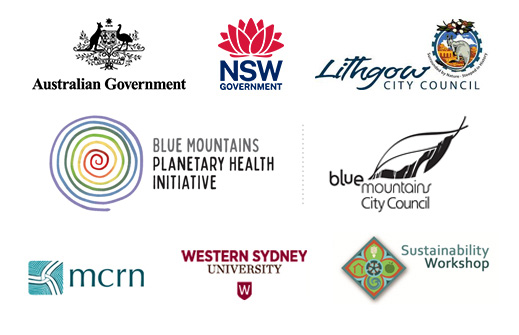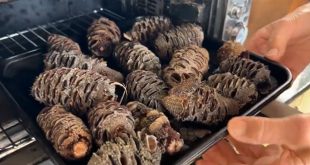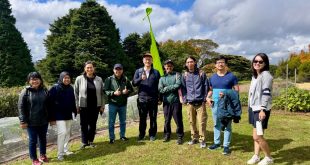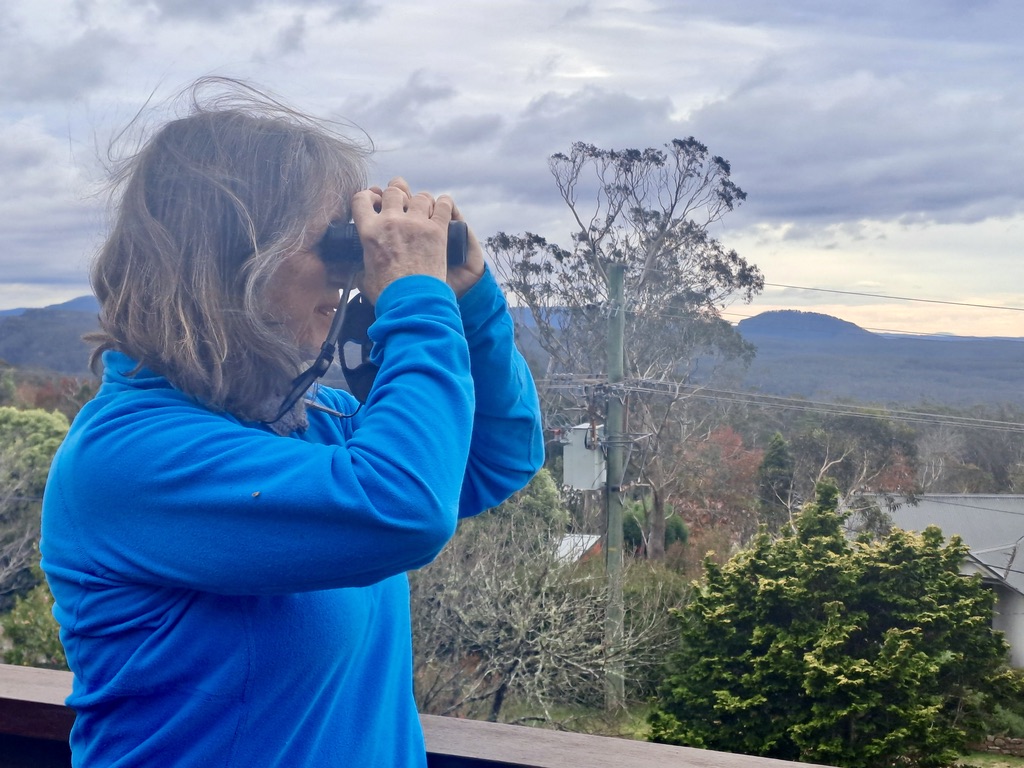
Carol Probets at home in the Blue Mountains (Liz Durnan)
By Liz Durnan
A passionate birder for over 40 years, Carol Probets shares the joys of birdwatching, while revealing the changes to the prevailing birds of the Blue Mountains and why they matter.
What wild creature is more accessible to our eyes and ears, as close to us and everyone in the world, as universal as a bird? – David Attenborough
Birds have long had a significance in ancient folklore, foretelling the future and symbolising many facets of life, from birth to death, and everything in between.
As a birding guide in the Blue Mountains from her arrival in the 1980s, Carol Probets has witnessed changes in the prevailing species – the ones that have started to dominate and others that seem to be in decline.
Most concerning to Carol, and fellow birdwatchers, is what these changes mean for biodiversity and the reasons for the changing patterns – most likely a changing climate.
“Birds are such a noticeable part of the environment,” Carol says. “Most people tend to love watching them and they’re a good indicator of what’s happening to the health of the environment.
“They’re an integral part of the chain, they’re predators and they’re preyed upon, and they interact with plants and insects; they’re part of the big web of life.”
But Carol is concerned by some observations: “I’ve noticed incredible changes and I worry about those birds that are disappearing from the area.
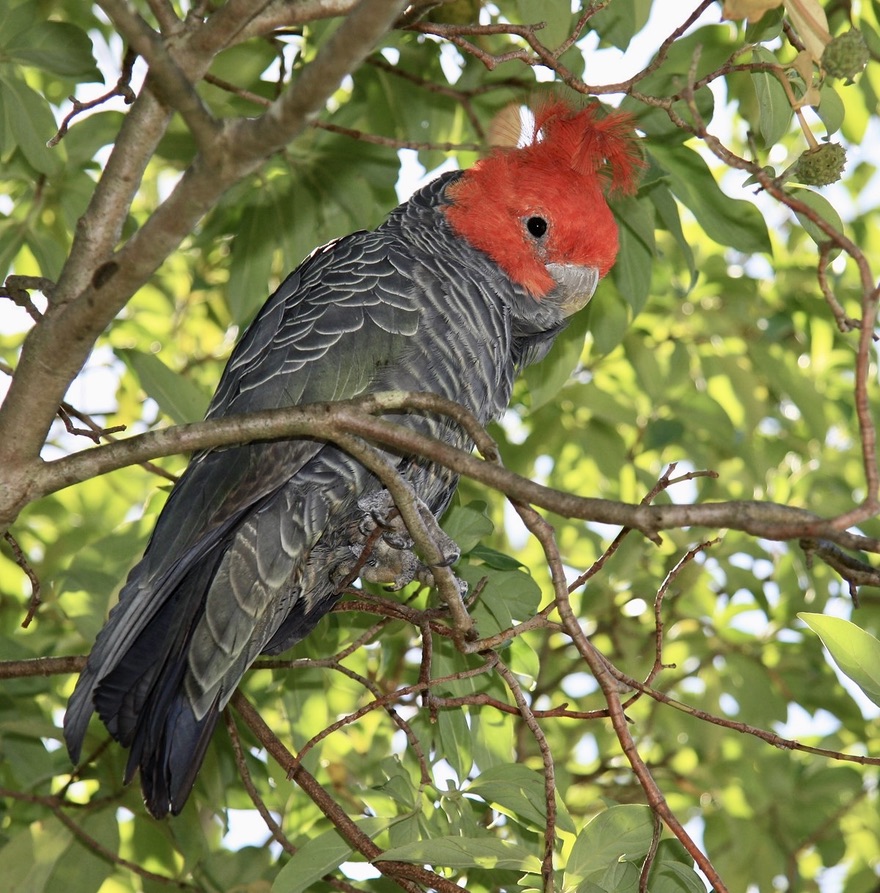
Gang-gang Cockatoo – birders have noted its diminishing numbers (Carol Probets)
“The one that everyone’s talking about is the Gang-gang Cockatoo. Since the early 90s, we’ve been charting the changes in various bird populations, and these are one of the obvious decliners in our records.”
While the reason for the decline is not definitively known, one theory is that it’s related to climate change because, as Carol says, Gang-gangs are a cool climate species and tend to be found in higher altitudes.
The other major theory is that their decline is related to the ‘phenomenal increase’ in Sulphur-crested Cockatoos. “People starting to watch birds now think they belong here, but in the 80s you hardly ever saw them in this area. Now it’s the first bird someone notices when they come to the Blue Mountains.
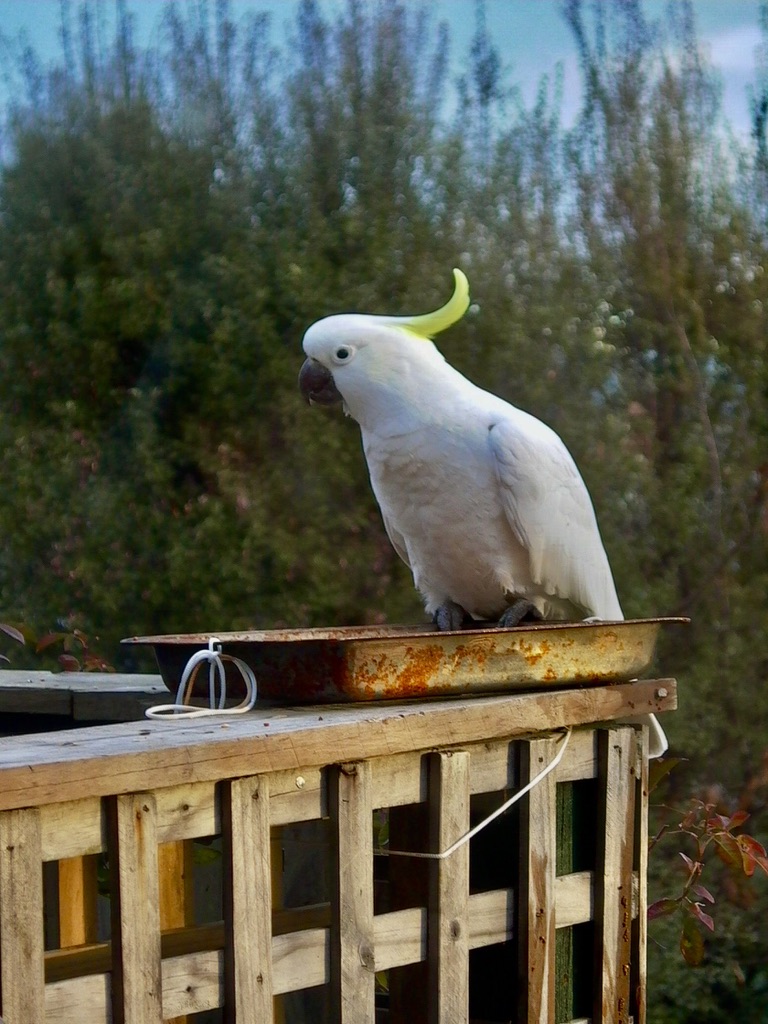
Sulphur-crested Cockatoos may be driving out the Gang-gangs (Lis Bastian)
“The Gang-gangs nest in tree hollows, like all cockatoos, and we suspect that they compete for nesting hollows with the Sulphur-cresteds, a bigger, more assertive bird.”
Carol is certain the Gang-gang’s decline is not related to food shortage because they’re incredibly adaptable, and one of their favorite foods is eucalyptus seeds, of which there are plenty. She describes this loss of diversity from the local Blue Mountains environment as “a tragedy”.
Another aggressive bird that’s also on the increase is the native Noisy Miner. While the Indian Myna has the disruptive reputation, the Noisy Miner is much more of a problem, according to Carol.
“Everybody loves to hate the Indian Myna, but really, they don’t tend to go far from urban areas, whereas studies show in woodland areas wherever you have Noisy Miners, you get a significantly lower diversity of other native birds.
“There are not many birds that can withstand the onslaught of aggression and they stop smaller birds, such as the endangered Regent Honeyeaters, from nesting successfully.”
This is where birdwatching groups, such as the Blue Mountains Birds Observers (BMBO), of which Carol is a member, play a critical role in tracking what is going on. They track numbers of the birds and hope to monitor nests with cameras to understand factors that might be affecting their nesting success.
BMBO combines the local knowledge of birders with years of experience. “So, we’re building up a really good database of sightings that are starting to show some interesting trends,” Carol says. “A huge part of our knowledge of birds has been contributed by amateur bird watchers.”
This kind of ‘citizen science,’ as it’s sometimes dubbed, has been contributing to bird knowledge ‘forever’ though it wasn’t called that in the past. Before more recent advances in technology, Carol and other birders would ‘atlas’ an area, collecting data on a piece of paper then sending it (by post) to the relevant body.
There are many such projects today tracking birds and keeping an eye on vulnerable species. Birdlife Australia (formerly the Royal Australia Ornithologists Union) was the main birding conservation body back when Carol started, but now there are numerous studies to which people can contribute data, as well as phone apps where people can record sightings.
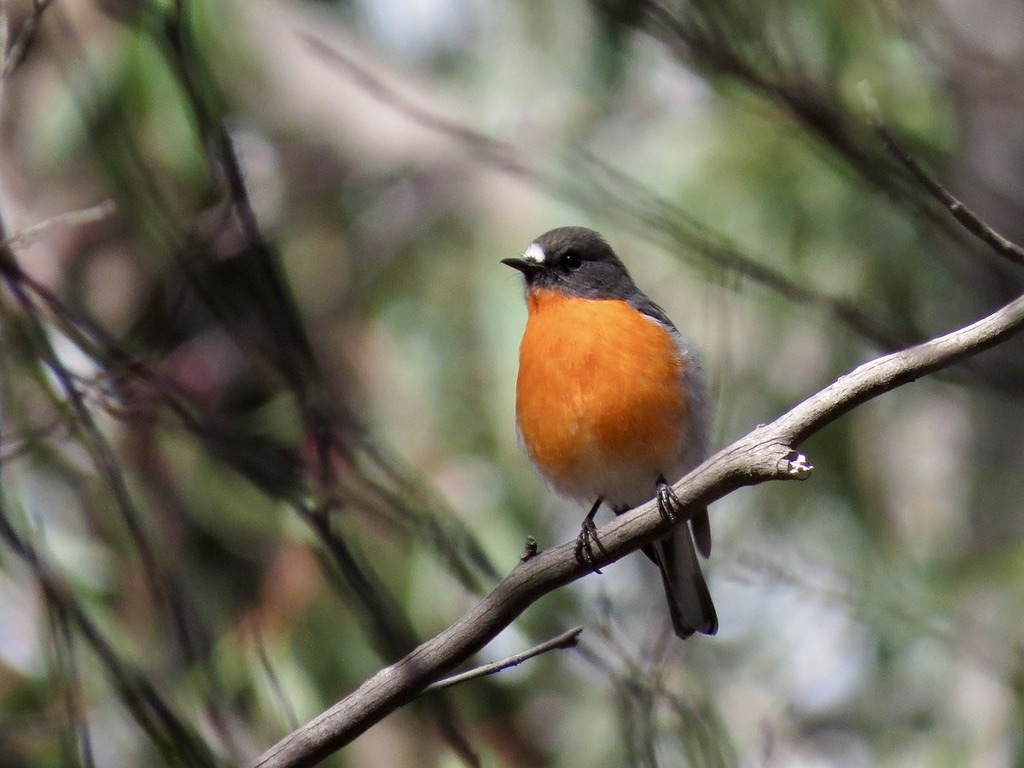
Male Flame Robin (Carol Probets)
Other declining birds in the Blue Mountains of concern are the Flame Robin, as well the Scarlet Robin and the Satin Flycatcher.
This leads me to ask Carol what the rest of us can do, at a local level, to help sustain the population of endangered birds.
She tells me that one of the most important things is to provide habitat, by either maintaining or planting in home gardens, including native species. While some people may think their gardens are full of birds, it’s often the bigger, more assertive birds they notice, but we need to pay attention to the little guys too.
“If they notice the little birds, they’re really seeing a truer representation of biodiversity and it’s these birds, such as the thornbills and fairy-wrens, that need that helping more, by planting habitat for them – dense shrubs, a mix of trees, low foraging areas – to take shelter and forage.”
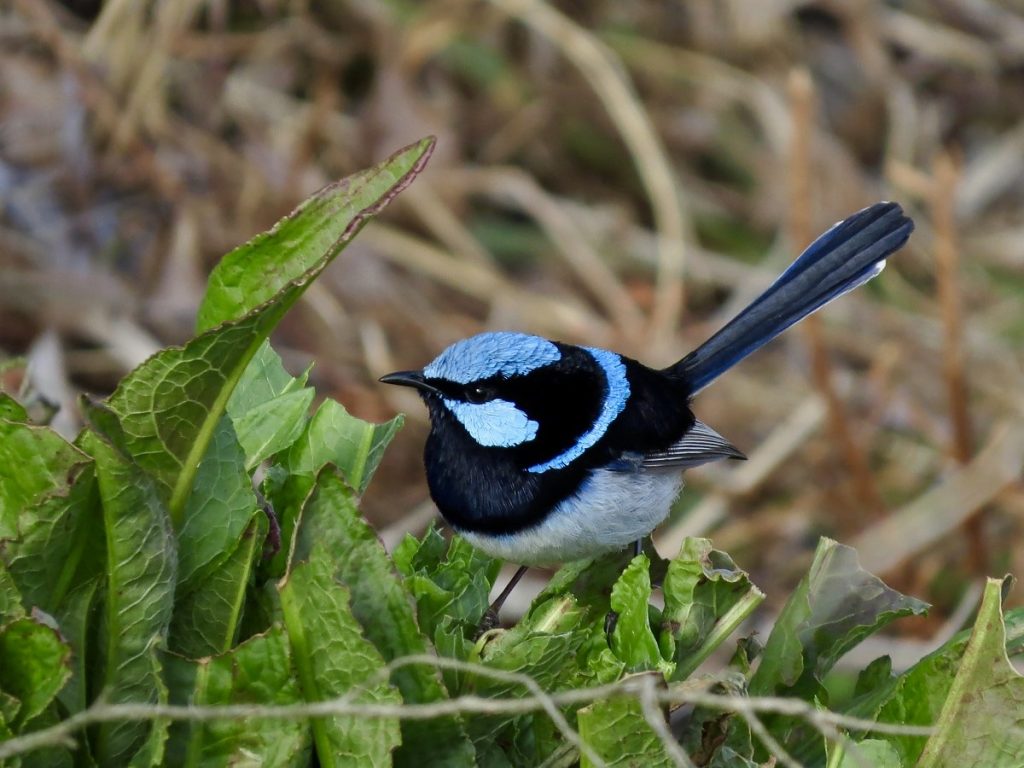
Male Superb Fairy-wren (Carol Probets)
Thinking about water instead of feeding birds is also important: “It’s always been controversial, but feeding birds is not a good thing. I know people get a lot of joy out of that, but the problem with feeding birds is, you’re helping the wrong species.
“You’re helping the ones that are the most adaptable and the most aggressive. And that in turn is disadvantaging the ones that really need our help.”
“You are better off feeding them through what you plant … or simply by providing water. Water is always a good thing and it’s lovely to watch the splashing and drinking.”
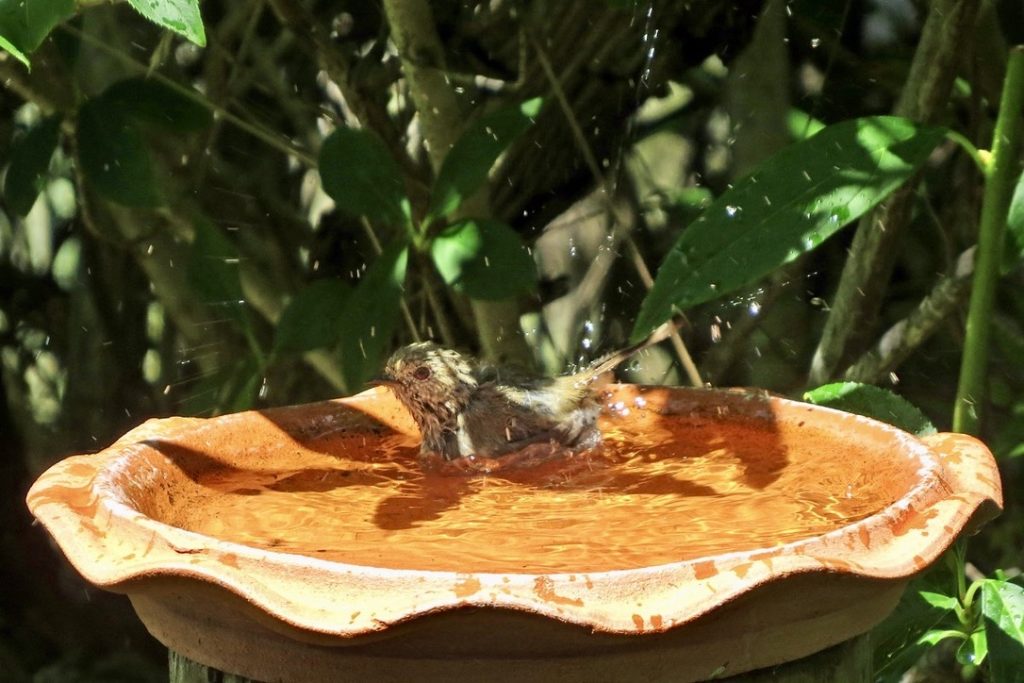
Brown Thornbill splashes in bird bath (Carol Probets)
On the upside, Carol is grateful to be in the Blue Mountains where the developed parts are a relatively small portion of the whole area. She began her bird guiding business more than 20 years ago, after moving to the Mountains as a rock climber, but the love of birds soon surpassed the love of rock.
“Even as a child, I was interested in birds and when I came to the Blue Mountains and got into climbing and bushwalking, that rekindled it, and meeting people who were also into birds, like Fiona [fellow Blue Mountains birdwatcher and bird artist Fiona Lumsden].”
While concerned about declining species, Carol still loves birdwatching here: “There’s something wonderful about going out for a walk and seeing or recording 30 or 40 different species.
“It’s not until you become aware of all those little birds that you realise just how much diversity there is and it’s so fascinating and exciting.”
For Carol, it’s often also a meditative experience: “In so many ways, it focuses you into the moment. If you’re trying to see a bird, you’re not really thinking about what you’re going to have for dinner tonight or how you’re going to pay the next bill.
“You’re just thinking about the bird: ‘What is it? What’s it doing?’
“You can be full of angst, and you go for a walk in the bush with the binoculars or the camera and you forget about everything else.”
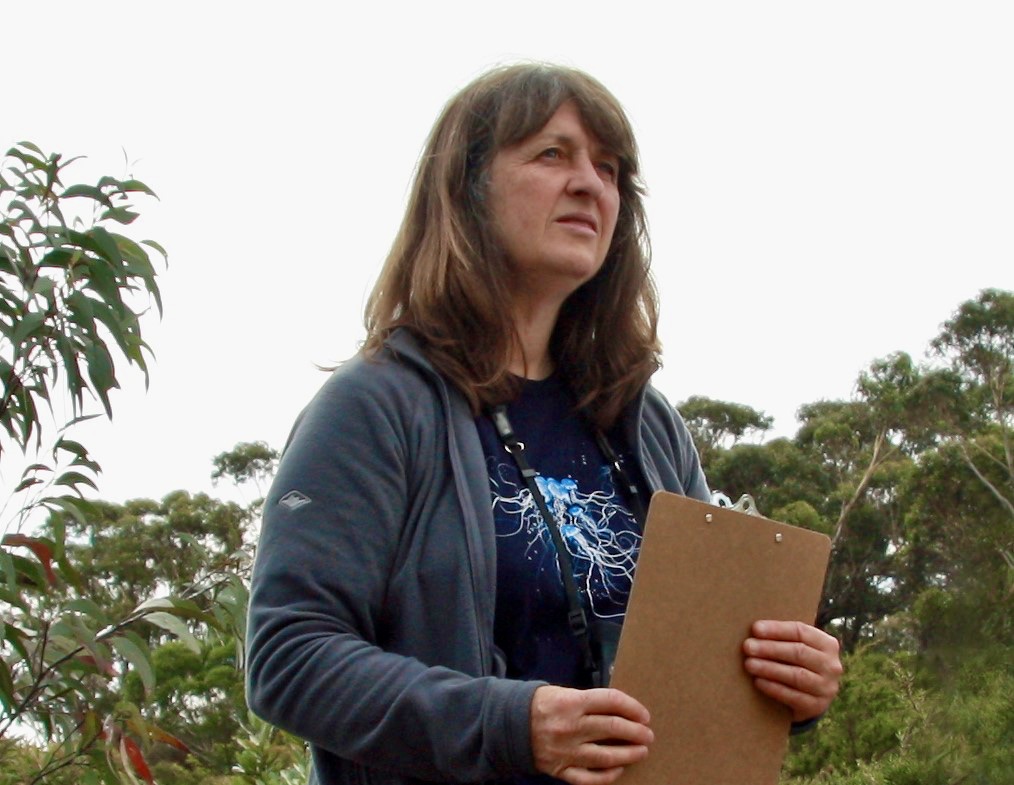
Carol Probets counting Regent Honeyeaters (supplied)
On the 1st April 2023, Carol led a Brunch With The Birds event at the former Katoomba Golf Course where she shared why the site provides a diversity of habitat for birds and which birds can be seen there, especially during bird migration periods.
Related Story:
Lost Song: The Plight of the Regent Honeyeater
This story has been produced as part of a Bioregional Collaboration for Planetary Health and is supported by the Disaster Risk Reduction Fund (DRRF). The DRRF is jointly funded by the Australian and New South Wales governments.
